Recent reports coming out of Iraq suggest that Islamic State are destroying ancient artefacts, buildings, bulldozing cities like Nimrud. (see – http://www.theguardian.com/world/2015/mar/12/isis-ransack-ancient-assyrian-city-confirmed-iraq-head-of-antiquities-dur-sharrukin and http://www.theguardian.com/world/2015/mar/06/isis-destroys-ancient-assyrian-site-of-nimrud). Reading these reports has taken me straight back to the Taliban’s destruction of the two immense images of Buddha in the Bamiyan valley in 2001.
Whether it is possible to write poetry about such events is a question continually haunting me. It’s not a question I answer well or often I’m afraid – I’ve written precious few ‘political’ poems (four short pieces have recently been published here: http://themissingslate.com/2015/03/10/four-songs/). But I did manage to write about the Bamiyan valley (eventually published in 2004, in An English Nazareth: https://martyncrucefix.com/publications/an-english-nazareth/ ). As I struggled with the poem I felt something interesting happening and I kept a drafting diary, some extracts of which I am posting below after the finished poem. I hope they provide some insight into the (often chaotic, chancy) thought processes of a writer, though they are necessarily fragmentary and I haven’t felt able to include copies of the drafts referred to (most of which I kept). I remember discussing the process of writing this particular poem with a workshop group in Bath a few years back and they responded well to the material though I’ve never organized it into a full account.
The valley history
Over wind-eroded, bleached badlands,
creaking packs come past buttress and crevasse
through which scrolls of Chinese silk unfold,
beside green glassware from Alexandria,
poised bronze wrought in the dust of Rome
and Indian lattice-work, ivory figurines.
With an almost audible sigh of the road,
merchants and drovers lower themselves
to the lush place, benignant Bamiyan’s
sweet water, bird-song, best of all its shade.
Their hearts livened by its fine excess.
The valley gives rest beside standing pools.
There is time and reason enough to praise.
A million hammer blows hollow a place
for rough giants daubed with mud and straw,
for feet and face and Buddhas’ folded robes
in plaster-work, paint – one red, one blue –
their moonlike features, loose, gilded hands.
Yellow-robed priests are like tiny flowers
that spring beneath each benevolent gaze
by day and night, a new thousand years.
In brief intervals between battles that ebb
and flow indifferently now,
Kalashnikovs stashed between the toes
of the red figure – dry there, defendable.
Smooth head and sloping shoulder of the blue
irrupt orange as an order of dust rolls down
and the cry is All we are breaking is stone.
Extracts from a diary about drafting this poem:
An article in the Saturday newspaper in the spring of 2001, recorded the apparent betrayal of his word by the Taliban leader, Mullah Mohammed Omar. In meetings with the Society for the Preservation of Afghanistan’s Cultural Heritage (SPACH), promises had been made to preserve two magnificent colossi, statues of Buddha, in the remote valley of Bamiyan. Within days of agreement being reached, rather than safeguarding the statues, the Taliban were shelling them. I sit and read this, as is usual, half-minded on other things, as I have been reading several articles the same morning, but I decide to tear this one out because I have had that inner stirring which I recognise as the voice of a poem to be. Writing the poem is finding a context – language, form, tone, narrative structure etc – what Auden calls the ‘verbal contraption’ – which will allow something of the reaction I experienced on reading the piece to re-create itself in my reader. It is that communication with which I am concerned. This is the truth I intend to communicate – not the literal honest truth.
*
I don’t progress far with a draft; I suspect because I have not yet found the distance from the informational aspects of the incident. This may or may not have been aggravated by my searching out information about the Buddhas of Bamiyan on the Internet – photos and earlier reports of concerns about the Taliban intentions and some historical details too.
Reading the first draft, it struck me that what I felt I was responding to was less a religious concern – this confirmed my uneasiness about writing about such geographically and culturally remote subjects – more an artistic one – about which I felt I might have something to say. The desecration and denial of the powers of art. This matched itself up in my mind with my sense that art arises out of an excess – economically and temporally – a luxury of a sort and the Bamiyan valley (in contrast to the surrounding rugged and desolate landscapes) seemed to suggest this contrast of the frugal and the rich. I mean the richness enough to devote survival time to the creation of art. I was therefore interested, in a second draft, in this contrast and the relation between trade – the Silk Road I began with – and the skill and beauty of the statues, the way in which they celebrate the excess and wealthiness and goodness of life – are separate from it, but at the same time arise out of it.
*
Then it was on Radio Four – possibly on Thought for the Day – half heard between the toast and marmalade and children’s cereals bowls. Between periods of blank inattention, I think I heard the speaker musing that she felt an irony in the situation – that it is the iconoclast who appears to attribute great power to the icon – often more so than the creators of the icon (this especially so in Buddhism where icons are certainly not created to be worshipped). The iconoclast fears the statues’ powers and this is why he feels they must be destroyed. This idea struck me as an interesting light on the situation and the tension between this idea and the declaration of Mullah Omar that these icons were just ‘rocks’ immediately presented itself as a likely ending to the poem – resonant, surprising, gesturing away from the topical towards something more universal.
*
One comment from a reader of a later draft stuck in my mind and grew into something that began to feel problematic. The comment was to the effect that the poem as it now stood had rather grand, magisterial tone, a kind of confident utterance, that swept the reader along. This had seemed fine originally, something related to the historical process and sweep I had hoped to capture and imitate in the poem as a whole. But it now hooked up with a remote dissatisfaction I had begun to feel that the poem had a remoteness that could be construed – I’m being coy here, I mean, I did construe it – as a lack of engagement with the material, in the sense that the statements the poem was making were too monolithic, confident, not as poetry, but as political/cultural comment. This took several weeks of re-reading the poem to come to the fore in my response to it and it wasn’t until – by chance – I had been reading Eavan Boland’s book, Object Lessons, that I could articulate what my objection to the poem had become.
In her book, Boland traces her own development as a poet, particularly as a woman poet in Ireland where she felt the tradition of Irish poetry, though vibrant and respected in ways which we, on the other side of the North Sea, often envy, did not readily allow the writer of poems to be female. One effect of this was for Boland, as an aspiring woman poet, to adopt the modes and language of the dominant male tradition. She argues that she recognised this effect in the poem ‘The War Horse’. The poem, she felt after completing it, suffered from a confusion between “the political poem and the public poem”. She felt that she had allowed the subject of her poem “to be a representative and the object to be ornamental. In such a relation, the dangerous and private registers of feeling of the true political poem [are] truly lost. At the very moment when they [are] most needed”. I began to feel the same thing had occurred in my poem. It was a public poem (something I’d worried about from early on) and in being so, it had not encompassed, or involved, anything more personal or private of my own self, that might serve to give perspective, even to undermine the position so evidently held by the poem. This is where the confidence of the poem’s voice derives from, but also its, arguably, simplistic nature.
*
At this stage, I couldn’t see how I was going to be able to re-shape the whole piece in answer to a fundamental criticism like this. In all sorts of other ways I was pleased with the poem as it stood. Others liked it too. It might be argued that there ought to be room for a simplistic poem on a subject that seemed to provoke such outrage. Was my desire for a more destabilising ‘personal’ voice, the weakness of the liberal who tries to see all sides of a question? Perhaps. I felt uneasy aligning myself with journalists (even quality ones!) and I felt my gradually formulated criticism of the poem was a valid one. One thing I felt I could do was to remove the final two lines of the poem. These ringingly ironic lines were hard to cut, but they did end the poem on the moral high ground, as it were, assertive and confident, inviting the reader to dismiss the Mullah’s words as patently and unmistakably weasel words. The removal of this – leaving the poem to end on the rather more interesting irony of ‘Only children dare not deface a Buddha’s foot’ – went a little way to destabilising the, almost arrogance in the poem’s tone. Perhaps the Mullah’s phrase – which has been a crucial part of my poem from the very start – could be a title?
The title it became and there followed a number of drafts in which I seemed to be wrestling with the failures of the fourth stanza. There I was attempting to record in too documentary a style what the Taliban actually did with the statues. I was becoming over-involved in the image of their trepanning of the Buddhas and then placing explosives in the heads, as well as the burning tyres. In both these cases, part of the problem was that the poet in me had fallen in love with striking images which I found satisfying but which – on further reflection – probably had no real place in the poem. They were too much powered by my love of language – too little linked to the purpose they might serve at that specific point in a specific poem.
*
The poem was begun in March of 2001. And I was still working on it in September of that year – when the World Trade Centre was attacked. Al Qaeda’s links with Afghanistan are well known and the image of the monuments of East and West both being destroyed were impossible to keep apart in my mind now. I had a sense – again reflected in newspapers of the time that what had happened in Afghanistan had tortuously precipitated the Twin Towers attack. But too explicit a link would never serve so, at this stage, I tried to work in references to “stone dreams” falling not only in Bamiyan but elsewhere in the world. There were all kinds of ironies in linking these religious icons with the West’s most iconic images of capitalism and, though I don’t think I thought these through too rationally, they appealed to me and seemed to be apt in the context as Mullah Omar’s original statement caught my ear in large part because of its brutal materialism.
Around this stage, the form of the poem changed from the irregular stanzas it had been in since the start to unrhymed couplets. This, I hoped, would assist the lightening – the easing? – of the tone of the poem, as I’d begun to feel the clumped stanzas gave it a rather oratorical, speechifying feel, whereas the couplets would give a more unstable, edgy impression. Now called ‘The valley history’, it was still the final few lines, which seemed problematic. But with the eventual loss of the personification of ”fright”, the final choice of the phrase “irrupt orange” to suggest the splitting open of the Buddhas by the Taliban shells, and the removal of the rather too obviously paradoxical and (again) grandiose falling “stone dreams”, I felt the poem was finished enough. What eventually replaced the image of the falling towers was a phrase I was pleased to find. The “order of dust rolls down” alliterated well in the context, suggested the literal plumes of smoke and dust which accompanied the statues’ demise and, of course, also suggested the rolling dust clouds which followed 9/11. As well as literal truth, the “order” is intended to suggest a rule of government, or at least the decree of leaders, which tends towards destruction rather than construction and this was one of the originating impulses of my beginning the poem many months earlier.
Discover more from Martyn Crucefix
Subscribe to get the latest posts sent to your email.
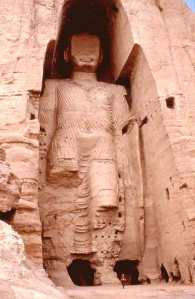
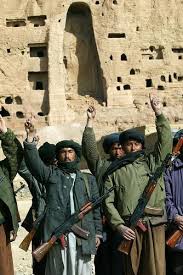

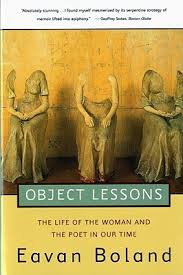
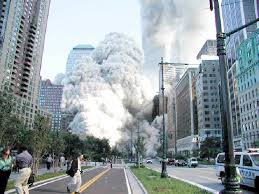
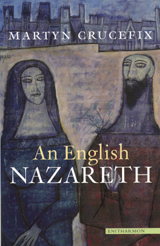
[…] some of the thoughts from my last blog about the difficulties of writing about current events (https://martyncrucefix.com/2015/03/13/how-do-i-write-poems-about-current-events/). I am reminded that we are closing in on the twelfth anniversary of the first so-called ‘shock […]
LikeLike